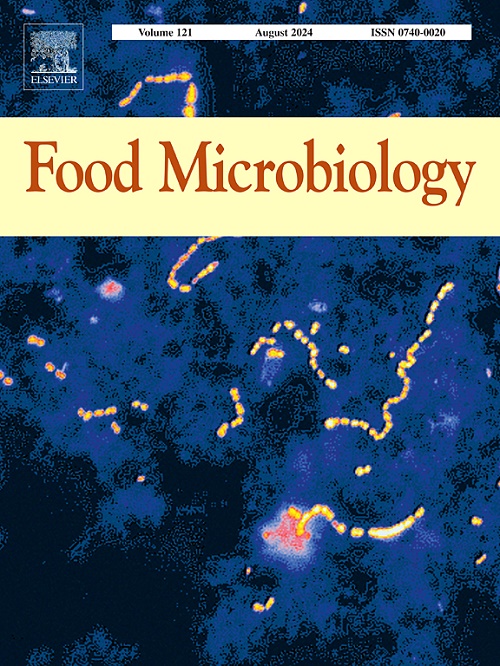Hierarchical Bayesian linear mixed model to estimate variability in the thermal inactivation parameters for Listeria species
IF 4.5
1区 农林科学
Q1 BIOTECHNOLOGY & APPLIED MICROBIOLOGY
引用次数: 0
Abstract
A total of 476 D-values associated with 76 strains of Listeria spp. in liquid media were obtained from 27 scientific articles. Meta-analysis was carried out using hierarchical Bayesian models to assess variability, predict the D-, and estimate the -, and -values for Listeria spp. across a range of temperatures (55–70 °C) and pH values (3–8 units). Different hypotheses regarding variability between strains or studies in each model correspond to different hierarchical assumptions about the inactivation parameters. The models produced were compared based on their predictive ability, Bayes-R2 and widely applicable information criterion (WAIC) values. A hierarchical model that considered random effects due to both strain and study effects on the thermal inactivation parameters was determined to be the “best” model and was subsequently used to estimate the posterior distributions for the D-, -, and -values. The variability introduced in the parameters due to differences between studies was higher than that of variability between strains. The parameters estimated using the model for different strains of Listeria species may be applicable for processing aqueous foods such as milk and liquid products such as sauces and gravies across a temperature range of 55–70 °C and pH values of 3–8 units.
用层次贝叶斯线性混合模型估计李斯特菌种热失活参数的变异性
从27篇科学论文中获得76株李斯特菌在液体培养基中的476个d值。采用分层贝叶斯模型进行meta分析,评估温度(55-70°C)和pH值(3-8个单位)范围内李斯特菌的变异性,预测D-,并估计zT-和zph值。每个模型中关于菌株或研究之间可变性的不同假设对应于关于失活参数的不同层次假设。根据模型的预测能力、贝叶斯- r2和广泛适用的信息准则(WAIC)值对模型进行比较。考虑应变和研究对热失活参数的随机影响的分层模型被确定为“最佳”模型,随后用于估计D-, zT-和zph值的后验分布。由于研究之间的差异而引入的参数变异性高于菌株之间的变异性。利用该模型估计的李斯特菌不同菌株的参数可能适用于加工水食品,如牛奶和液体产品,如酱汁和肉汁,温度范围为55-70°C, pH值为3-8单位。
本文章由计算机程序翻译,如有差异,请以英文原文为准。
求助全文
约1分钟内获得全文
求助全文
来源期刊

Food microbiology
工程技术-生物工程与应用微生物
CiteScore
11.30
自引率
3.80%
发文量
179
审稿时长
44 days
期刊介绍:
Food Microbiology publishes original research articles, short communications, review papers, letters, news items and book reviews dealing with all aspects of the microbiology of foods. The editors aim to publish manuscripts of the highest quality which are both relevant and applicable to the broad field covered by the journal. Studies must be novel, have a clear connection to food microbiology, and be of general interest to the international community of food microbiologists. The editors make every effort to ensure rapid and fair reviews, resulting in timely publication of accepted manuscripts.
 求助内容:
求助内容: 应助结果提醒方式:
应助结果提醒方式:


